Day Five: Jellybeans and Temple Towers
In the temples of South India, the dominant architectural feature is gopura, (gateway towers) that mark four directions in the enclosure wall built around the main temple. Gopuras of Ranganathaswamy Temple in Tamil Nadu and Meenakshi Amman Temple in Madurai are painted in brilliant jellybean colors that shimmer under the tropical sunlight and dominate the landscape for miles.
The basement of the gopuras is constructed of stone but their multiple tiers are made with brick and plaster that minimizes the weight of the superstructure. A barrel like structure called sala caps each gopura.
Ranganathaswamy Temple, Srirangam, Tamil Nadu
The main structure of Ranganathaswamy Temple culminates in a gold pinnacle. Surrounded by seven concentric walls, each wall has four gopuras facing the four directions. The farthest from the gold-topped sanctum sanctorum is largest in size. Sari Shops, restaurants, and flower garland and fruit stalls occupy the space within the two outermost prakarams of the temple. A Hall of 1000 pillars is part of the temple complex and is made of granite.
Meenakshi Amman Temple, Madurai
Meenakshi Amman Temple is dedicated to the goddess Meenakshi (Parvati) and her consort Shiva Sundareswara. Built between 1623 and 1655 CE it houses 14 gopuras. When first built it formed the center of the city of Madurai from which radiated city streets like long petals of a lotus.
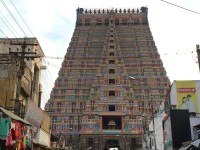
Main Entrance Gopura
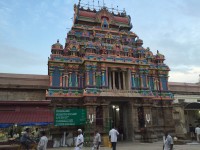
An Inner Gopura
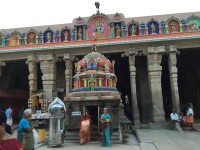
Chariot for Festival Processions
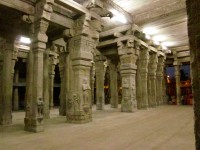
Hall of Hundred Pillars
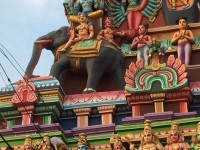
Detail with an Elephant
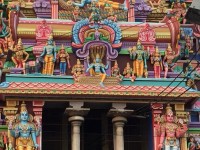
Detail of the First Tier
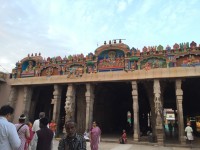
Inner Hall

Chariot for Festival Processions
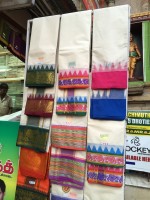
Saris on Sale
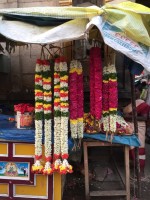
Fresh Flower Garlands
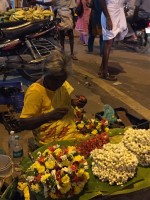
Jasmine Lady
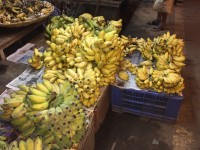
The Staple Fruit
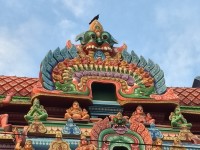
Detail of a Pinnacle

